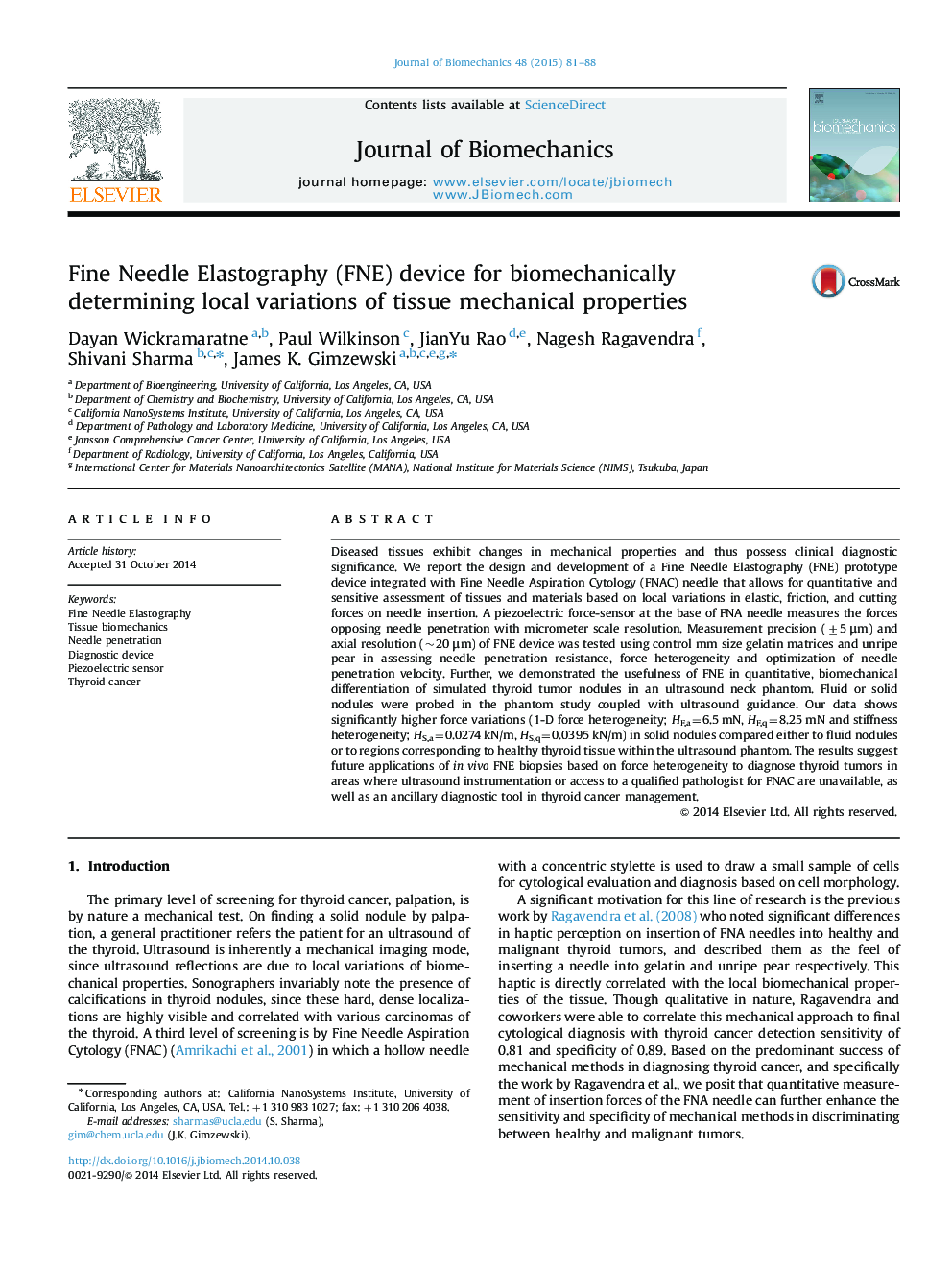| Article ID | Journal | Published Year | Pages | File Type |
|---|---|---|---|---|
| 10431660 | Journal of Biomechanics | 2015 | 8 Pages |
Abstract
Diseased tissues exhibit changes in mechanical properties and thus possess clinical diagnostic significance. We report the design and development of a Fine Needle Elastography (FNE) prototype device integrated with Fine Needle Aspiration Cytology (FNAC) needle that allows for quantitative and sensitive assessment of tissues and materials based on local variations in elastic, friction, and cutting forces on needle insertion. A piezoelectric force-sensor at the base of FNA needle measures the forces opposing needle penetration with micrometer scale resolution. Measurement precision (±5 μm) and axial resolution (~20 μm) of FNE device was tested using control mm size gelatin matrices and unripe pear in assessing needle penetration resistance, force heterogeneity and optimization of needle penetration velocity. Further, we demonstrated the usefulness of FNE in quantitative, biomechanical differentiation of simulated thyroid tumor nodules in an ultrasound neck phantom. Fluid or solid nodules were probed in the phantom study coupled with ultrasound guidance. Our data shows significantly higher force variations (1-D force heterogeneity; HF,a=6.5 mN, HF,q=8.25 mN and stiffness heterogeneity; HS,a=0.0274 kN/m, HS,q=0.0395 kN/m) in solid nodules compared either to fluid nodules or to regions corresponding to healthy thyroid tissue within the ultrasound phantom. The results suggest future applications of in vivo FNE biopsies based on force heterogeneity to diagnose thyroid tumors in areas where ultrasound instrumentation or access to a qualified pathologist for FNAC are unavailable, as well as an ancillary diagnostic tool in thyroid cancer management.
Related Topics
Physical Sciences and Engineering
Engineering
Biomedical Engineering
Authors
Dayan Wickramaratne, Paul Wilkinson, JianYu Rao, Nagesh Ragavendra, Shivani Sharma, James K. Gimzewski,
